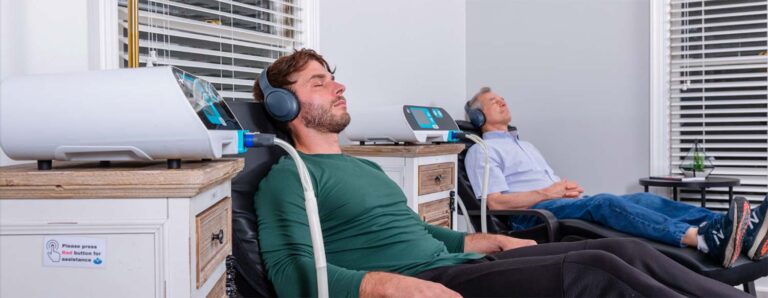Soft tissue injuries occur when muscles, tendons, and ligaments are damaged through overuse, direct impact, or unexpected twisting. Certain joints are particularly vulnerable to these types of injuries, including your wrists, knees, shoulders, elbows, and ankles. Doctors classify soft tissue injuries according to their severity.
- Grade One. Mild damage that occurs as the result of minor stretching or impact, affecting no more than ten percent of the tissues in the injured area. Symptoms include moderate pain, swelling, and tenderness, but no loss of function. Patients are normally instructed to rest and ice the injury, which normally heals within a few days.
- Grade Two. Caused by significant stretching or a heavy blow that affects 10-90 percent of the fibers, tendons, and ligaments in the limb or joint. Pain is sharp, but manageable with treatment. Swelling and bruising are noticeable. Most patients also experience at least some loss of function. They may walk with a limp or lose their ability to lift heavy objects. Healing takes an extended period of time, up to several months. In some cases, physical therapy may be required before the patient is well enough to return to their old routines.
- Grade Three. A debilitating injury that occurs as the result of a complete rupture of the muscle, ligament, or tendon, accompanied by intense pain, swelling, bruising, and even deformity, which renders the limb or joint unstable and unusable. Surgery or complete immobilization, followed by extensive rehab, are often the only ways to repair the damage.
Recovering From Soft Tissue Injuries
While mild injuries generally resolve on their own, more serious injuries can have long-lasting effects. Muscles, tendons, and ligaments are fiber-reinforced, composite structures made of connective, adipose, vascular, and nervous tissues, which makes recovery a complex and prolonged process. Tissues not only have to be regrown, but strengthened and specialized. Though your body begins healing 1-2 days after an injury, it may be months or even years before the process is complete. Complicating factors include:
- Circulation. While muscles have an abundant supply of blood vessels, ligaments and tendons have a comparatively small one. This limits the amount of oxygen and nutrients they receive, and the amount of waste that’s carried away, which hampers recovery.
- Inflammation. Though inflammation is a normal and natural part of healing, excessive inflammation can actually break down healthy tissue, including blood vessels. Prolonged inflammation also prevents the body from shifting into the proliferation phase, when new tissue forms and matures.
- Scarring. Scar tissue develops as part of the healing process. However, new scar tissue is tough and relatively inflexible. It has to be remodeled to make it strong and pliable enough to replace your original muscles, tendons, and ligaments. Unfortunately, scar tissue is made from criss-crossing layers of random fibers, which impedes blood flow. As a result, some patients don’t regain full function for upwards of two years following their initial injury.
Effect of PEMF on Soft Tissue Injuries
Pulsed Electromagnetic Field (PEMF) therapy is an emerging approach to healing and recovery. It creates waves of magnetic energy that penetrate bone, muscle, and connective tissue, energizing your body on a cellular level. Human cells communicate through bioelectric signals, which influence their basic functions.
PEMF influences the electrical potential of your cells, accelerating the rate at which they convert energy, absorb nutrients, and expel waste. It even encourages a process called microvascularization, which opens up the capillaries that supply your cells with oxygen, minerals, proteins, and other essential building blocks.
These effects have a powerful impact on the healing process. Besides stimulating cellular activity, exposure to PEMF also promotes the growth of cytokines and fibroblasts, which control inflammation and support tissue through the production of collagen. As a result, applying PEMF to damaged tissue helps it regenerate at a faster pace than it would if treated exclusively with conventional methods.
Treating Elbow Injuries with Aura Wellness PEMF
Falls are a common cause of soft tissue injuries. A 47-year-old man came to us after suffering a painful fall on the ice. Instead of following the traditional methods of rest, ice, medication, and time, he decided to explore the benefits of PEMF therapy. Through the use of high-intensity PEMF, he experienced a full recovery and substantial pain relief without the need for prescription drugs or any other interventions.
During his first session, he presented with significant pain, moderate swelling, and limited range of motion in his elbow. We began by applying our NOVA HD PEMF device to his injury for 15 minutes twice a day. By his second session, his pain had fallen from 8/10 to 3/10. Swelling had dissipated and he was able to extend his elbow once again. On day three, his pain had vanished entirely and bruising was hardly visible. He was able to move his elbow through its full range of motion without restriction or discomfort.
Finally, by day four, he had made a complete recovery and was able to resume his activities. The only remaining symptom was some mild scabbing, which was left to clear up on its own. No ice, compression, or medication was required at any point during treatment. We expedited recovery by harnessing the patient’s healing capabilities, accomplishing in days what might otherwise have taken weeks.
Start Your Journey to Faster Recovery
Aura Wellness provides a safe, non-invasive way to treat soft tissue injuries. By reducing inflammation, recharging cells, and promoting circulation, our PEMF devices enhance the healing process. Patients who undergo PEMF therapy not only experience less pain and swelling, but recover faster and regain full mobility with few constraints or limitations. Take the first step towards better health by speaking to one of our product specialists today!



